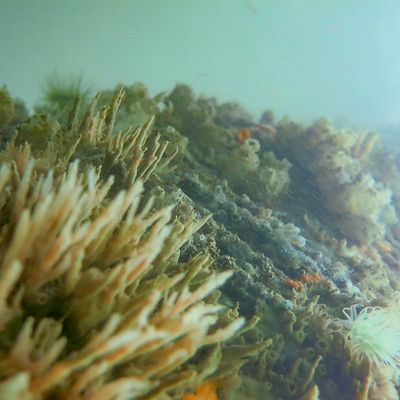

About Living Ports
The Next Generation of Port Infrastructure

LIVING PORTS is a collaboration of four partners led by ECOncrete Tech to showcase an industry level ecological alternative to traditional concrete infrastructure.
The installation will span two sites at the port of Vigo, and will include ECOncrete’s concrete technology in a 310m² sea wall and 100 coastal armor units.

The Port of Vigo provides the space for the project and on site support.
Cardama Shipyards creates a first of its kind viewing deck to showcase the technology to the public.
Denmark Technical University will conduct a biological review of the process.
ECOncrete technology's impact on sound reduction will be assessed in a first of its kind research project.
Objectives

Improved infrastructure
ECOncrete increases concrete’s compressive strength by 5% and chloride resistance by 10%, improving durability and longevity

Best practice adoption
The installations are expected to raise awareness of global ports and local communities with the goal of including ecological infrastructure as in marine construction best practices
%20copy.jpg)
Enhanced value proposition
LIVING PORTS has the potential to save on future marine developments costs, from reduced environmental mitigation costs (18,750€ per hectare) to less frequent maintenance.
%20(1).png)
Community outreach
The Nautilus observatory offers visitors a unique experience of witnessing first-hand the development of biodiversity on the ECOncrete seawalls.
Innovative Technology
Incorporating Ecology into Engineering
Modelled after nature, ECOncrete’s technology enables healthy ecosystems to develop on industry-standard infrastructure.

Life-enabling Composition
ECOncrete’s proprietary admix is tailored to encourage the growth of biodiverse marine life and increase infrastructure strength. The admix seals the concrete, encouraging natural marine processes like biocalcification (the growth of animals like barnacles and corals) and photosynthesis.
Habitat-creating Texture
Complex surface textures mimic natural marine surfaces, providing niches for a biodiverse community of ecosystem engineering organisms, like tubeworms or oysters to settle.


Nature Inclusive Design
The infrastructure is designed to create underwater and intertidal habitat, shelter, and breeding spaces. Each individual structure can be designed to encourage specific organisms, life stages, or endangered species, and reduce the number of invasive species that typically dominate “grey” concrete structures.
This technology will be applied to four infrastructures: a 310m² seawall, 100 units of coastal armor, for a viewing deck.
310m²
Seawall
100 units
Of coastal armor
